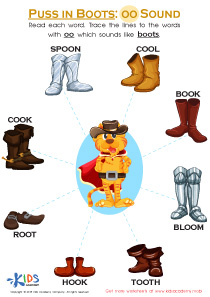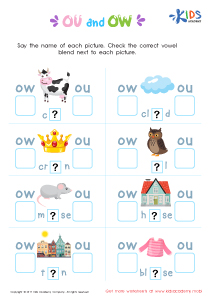Spelling practice Normal Vowel Blends Worksheets for Ages 6-7
5 filtered results
-
From - To
Discover our Spelling Practice Normal Vowel Blends Worksheets designed for ages 6-7! These captivating worksheets help young learners master essential spelling skills by focusing on common vowel blends. Each activity is created to enhance phonemic awareness and build a strong reading foundation. With colorful and engaging exercises, children will practice identifying, blending, and spelling vowel combinations effortlessly. Perfect for classroom use or at-home practice, these worksheets support literacy development in an enjoyable and interactive way. Boost your child’s confidence and skills with our expertly designed vowel blends spelling practice resources today!
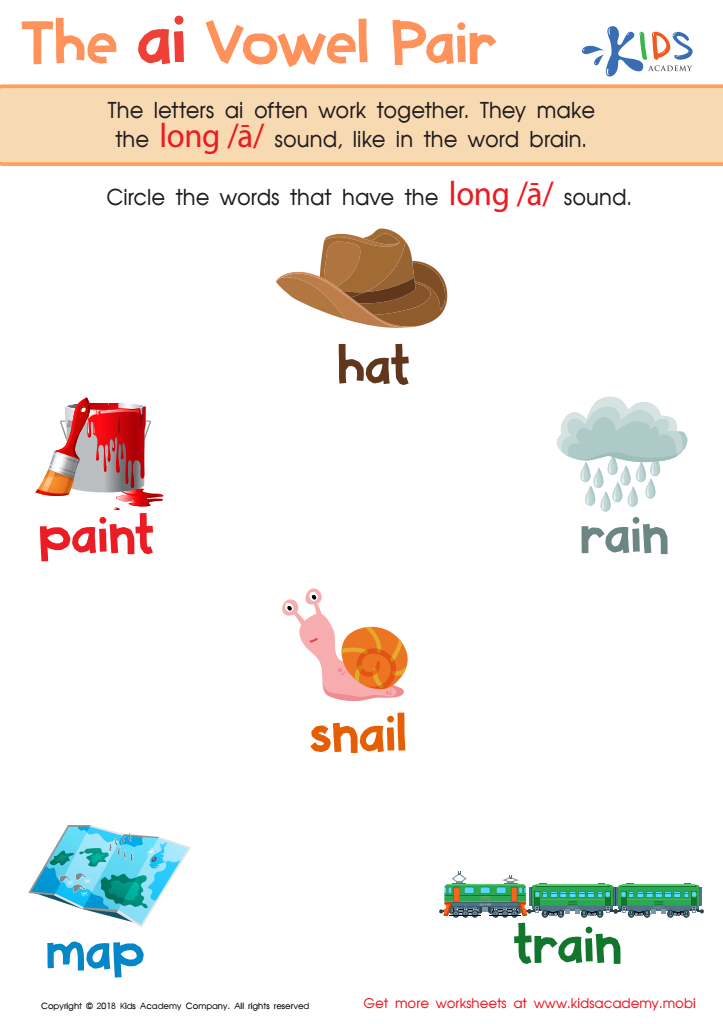

The AI Vowel Pair Worksheet
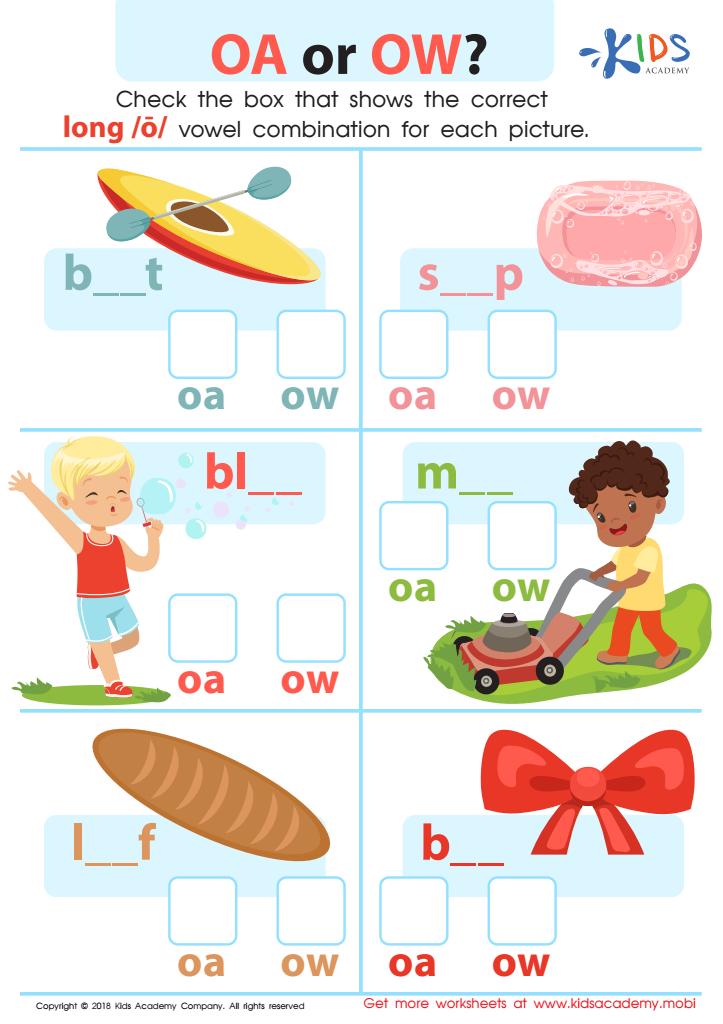

Reading: OA or OW Worksheet
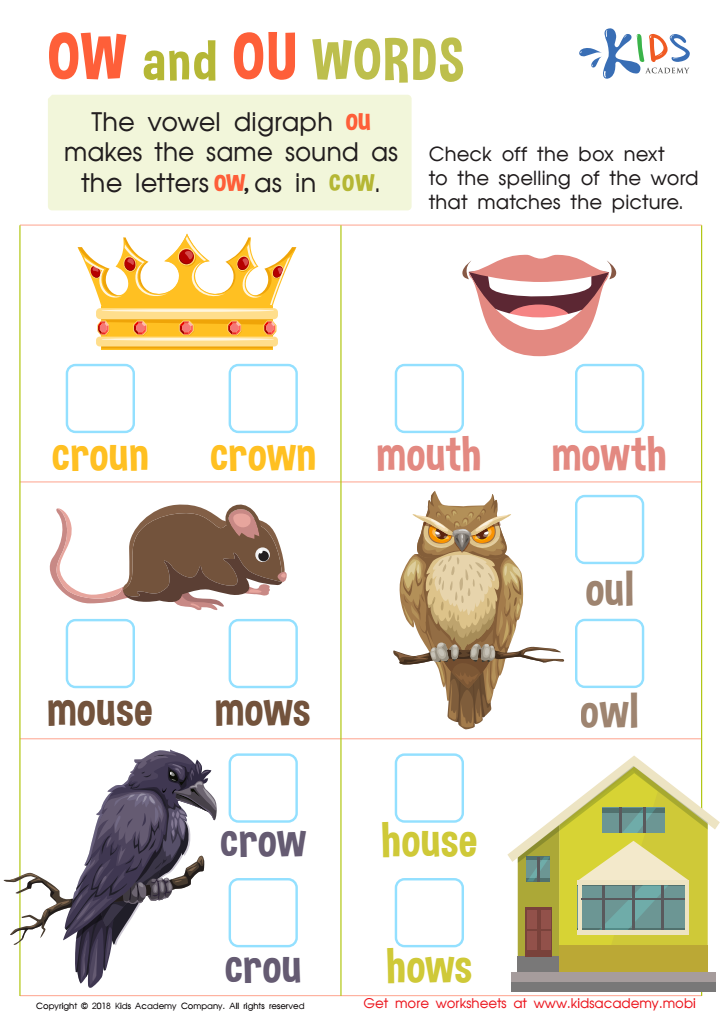

Reading: OW and OU Words Worksheet
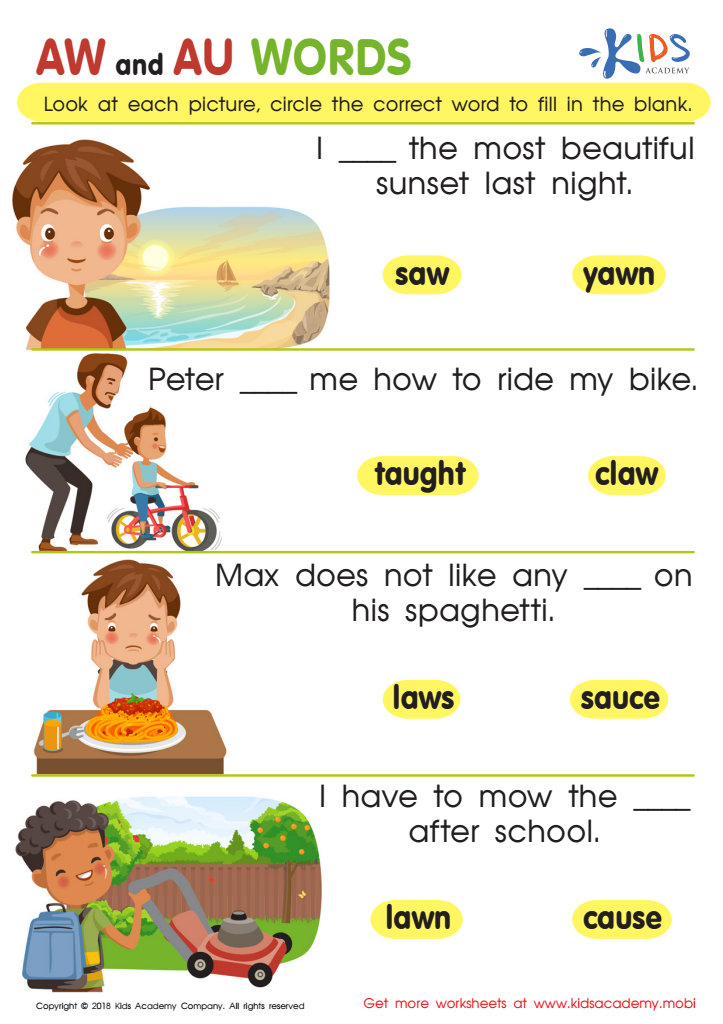

Reading: AW and AU Words Worksheet
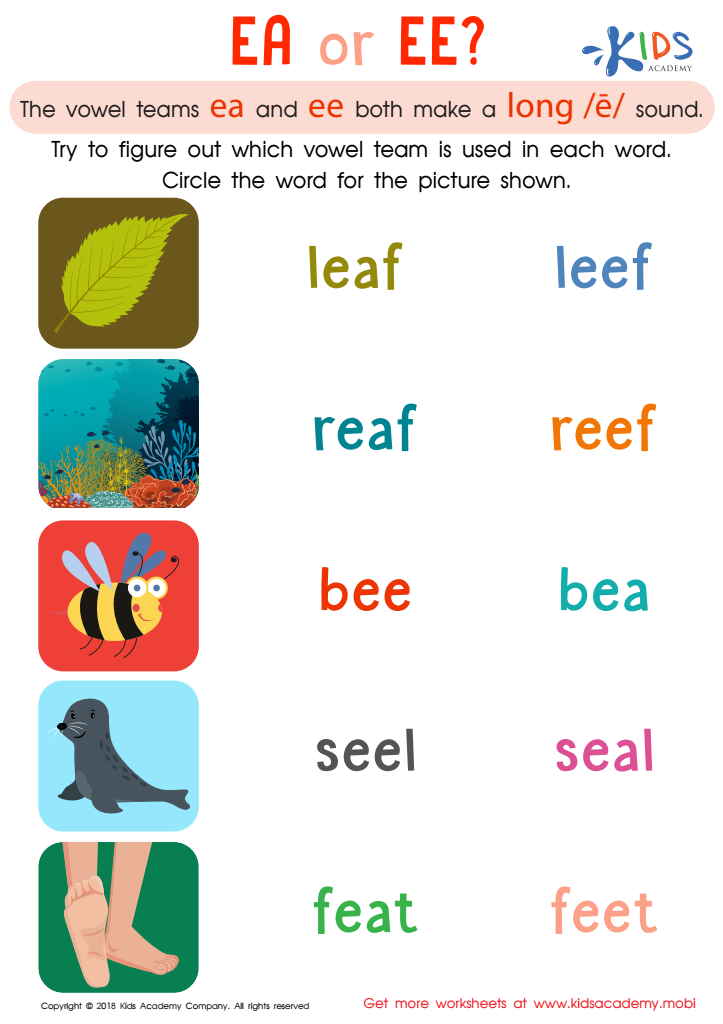

Reading: EA and EE Worksheet
Spelling practice with a focus on normal vowel blends is essential for young children, especially those ages 6-7, as it lays a strong foundation for their literacy skills. At this developmental stage, kids are becoming more aware of patterns in language and beginning to recognize how different letters and sounds come together to form words. Normal vowel blends, often found in common words like “bead,” “coat,” and “rain,” are recurring letter combinations that generate specific sounds, making them a pivotal part of early reading and spelling instruction.
Parents and teachers should prioritize this aspect because proficiency in normal vowel blends helps children to decode words more effectively. As they become familiar with these patterns, ringing accuracy and fluency in both reading and writing follow, enhancing their ability to comprehend and express ideas. Furthermore, mastering spelling and normal vowel blends can boost their confidence, reducing frustration related to reading difficulties.
Integrating these skills into regular practice helps in reinforcing phonemic awareness, promoting better retention and application of language rules. This attention to spelling and phonics prepares children not only for advanced literacy tasks but also supports their overall academic growth, making a significant impact on their future learning experiences. By investing in this foundational stage, parents and teachers help cultivate life-long, competent readers.

 Assign to My Students
Assign to My Students








